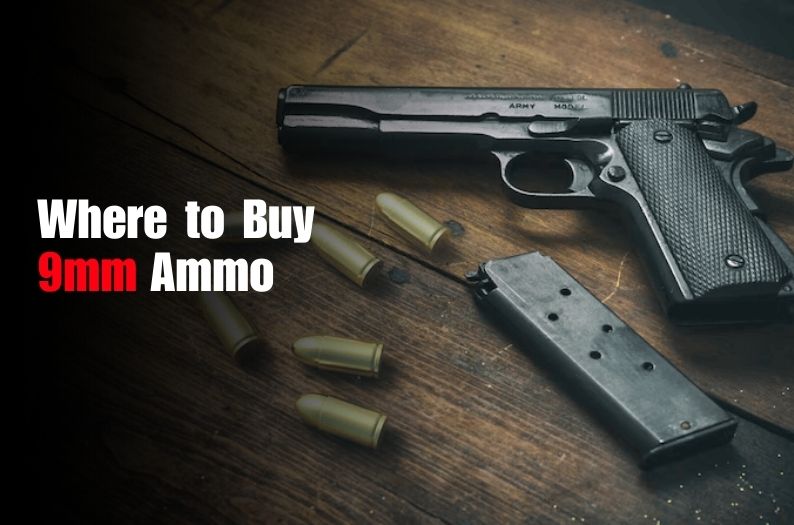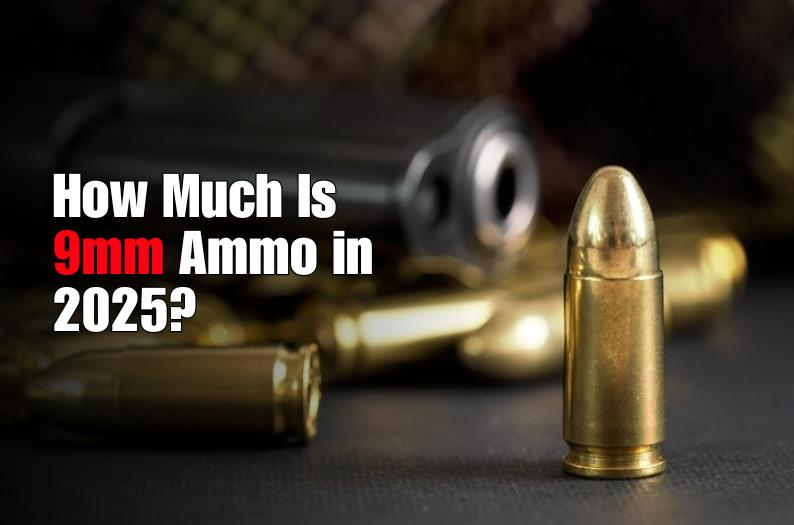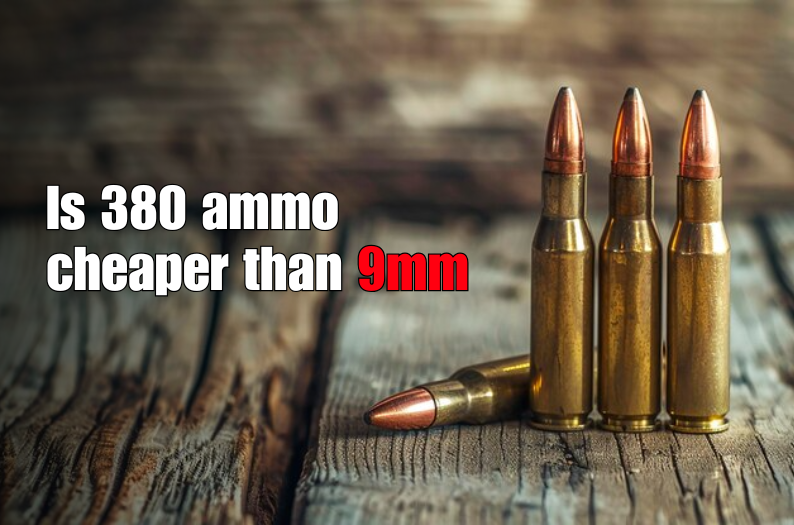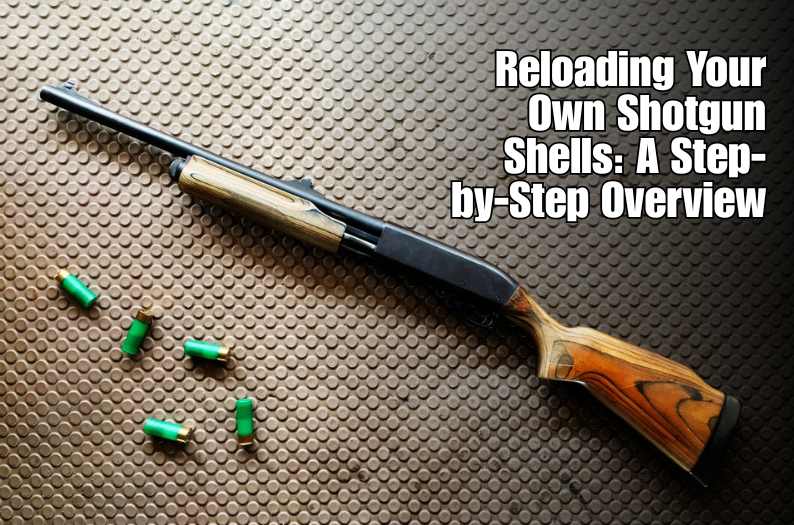Ammunition is the lifeblood of firearms. Without it, even the most advanced firearm is rendered useless. Understanding the basic parts of ammunition is essential for anyone involved in shooting sports, hunting, self-defense, or firearm maintenance. Whether you’re a seasoned shooter or a beginner, having a clear understanding of ammunition components will help you make informed decisions about the types of ammo that best suit your needs.
This comprehensive guide will delve into the essential components that make up a cartridge, including the case, primer, powder, and bullet. We will explore the role of each part in the functioning of a round, with a particular focus on the unique properties of hollow point bullets, which are widely used in self-defense and hunting. By the end of this article, you’ll have a thorough understanding of what goes into making a round of ammunition and why each part is crucial to its performance.
The Four Basic Components of Ammunition
A typical round of ammunition consists of four main parts: the case, primer, powder, and bullet. Each of these components plays a critical role in the performance of the round, and their quality and construction can significantly impact the effectiveness and reliability of the ammunition.
- Case
- Primer
- Powder
- Bullet
Case: The Foundation of Ammunition
The case, also known as the shell or casing, is the part of the ammunition that holds all the other components together. It is the most visible part of a cartridge and serves as the foundation upon which the other parts are built. The case is typically made of brass, steel, or aluminum, each material offering its own set of advantages and disadvantages.
Materials Used in Cases:
- Brass: Brass is the most common material used for cases due to its durability, corrosion resistance, and ease of reloading. Brass cases are favored by many shooters, especially those who reload their own ammunition, because they can be reused multiple times without significant wear.
- Steel: Steel cases are less expensive to produce than brass cases, making them a popular choice for budget ammunition. However, steel is not as malleable as brass, which can make reloading more difficult. Steel cases are also more prone to corrosion, though they are often coated to mitigate this issue.
- Aluminum: Aluminum cases are lightweight and corrosion-resistant, but they are not as durable as brass or steel. They are generally considered non-reloadable and are often found in low-cost ammunition for casual shooting.
Functions of the Case:
- Containment: The primary function of the case is to contain the primer, powder, and bullet, keeping them aligned and ready for firing.
- Sealing: Upon firing, the case expands slightly to seal the chamber, preventing gases from escaping backward toward the shooter. This ensures that all the energy from the burning powder is directed forward, propelling the bullet out of the barrel.
- Extraction: After firing, the case is extracted from the chamber by the firearm's extractor mechanism. The design of the case head is critical for reliable extraction, especially in semi-automatic and automatic firearms.
Case Dimensions:
The dimensions of a case are precisely engineered to fit specific firearms and calibers. These dimensions include the length, diameter, and taper of the case, all of which must match the chamber of the firearm for safe and effective operation. Mismatched ammunition can lead to dangerous malfunctions or even catastrophic failure of the firearm.
Primer: Igniting the Charge
The primer is a small but essential component of ammunition, responsible for igniting the powder charge that propels the bullet. The primer is located in the base of the case, either in the center (centerfire) or the rim (rimfire), depending on the type of ammunition.
Types of Primers:
- Centerfire Primers: In centerfire ammunition, the primer is located in the center of the base of the case. Centerfire primers are replaceable, which allows the case to be reloaded multiple times. There are two main types of centerfire primers: boxer primers and Berdan primers.
- Boxer Primers: Boxer primers are the most common type of primer used in the United States. They are designed with a single flash hole in the base of the case, allowing the primer to be easily removed and replaced during reloading.
- Berdan Primers: Berdan primers are more common in Europe and differ from Boxer primers in that they have two or more flash holes. Berdan-primed cases are more challenging to reload due to the difficulty in removing the spent primer.
- Rimfire Primers: In rimfire ammunition, the primer compound is distributed around the rim of the case. When the firearm’s firing pin strikes the rim, it crushes the primer, igniting the powder. Rimfire primers are integral to the case, making them non-reloadable.
Primer Composition:
Primers are composed of a sensitive explosive compound that ignites when struck by the firing pin. This compound typically includes lead styphnate, barium nitrate, and antimony sulfide, though non-toxic primers that use different compounds are becoming more common due to environmental and health concerns.
Function of the Primer:
- Ignition: The primer’s primary function is to ignite the powder charge. When struck by the firing pin, the primer generates a small but intense flame that travels through the flash hole(s) into the case, igniting the powder.
- Reliability: The reliability of the primer is critical for the overall performance of the ammunition. A misfire (failure to ignite) or hangfire (delayed ignition) can result in dangerous situations, especially in self-defense or hunting scenarios.
Powder: The Propellant
The powder, also known as propellant, is the component that provides the energy needed to propel the bullet out of the barrel. The type, quantity, and quality of the powder play a significant role in the performance of the ammunition, affecting velocity, accuracy, and recoil.
Types of Powder:
- Black Powder: Black powder is the oldest type of propellant, consisting of a mixture of potassium nitrate, charcoal, and sulfur. While it is still used in some historical firearms and black powder rifles, modern ammunition typically uses smokeless powder.
- Smokeless Powder: Smokeless powder is the standard propellant used in modern ammunition. It is composed of nitrocellulose, and sometimes nitroglycerin, and produces significantly less smoke than black powder, hence the name. Smokeless powder comes in various forms, including single-base, double-base, and triple-base powders, each with different characteristics.
- Single-Base Powder: Composed primarily of nitrocellulose, single-base powder is common in many types of ammunition due to its stability and consistent burn rate.
- Double-Base Powder: Double-base powder contains both nitrocellulose and nitroglycerin, offering increased energy and a more intense burn. It is used in higher-performance ammunition where additional power is needed.
- Triple-Base Powder: Triple-base powder includes nitrocellulose, nitroglycerin, and nitroguanidine, providing even greater energy and a slower burn rate. It is typically used in large-caliber military and artillery ammunition.
Powder Burn Rate:
The burn rate of the powder is a critical factor in the performance of ammunition. The burn rate determines how quickly the powder burns, affecting the pressure and velocity generated within the cartridge.
- Fast Burn Rate: Powders with a fast burn rate are ideal for short-barreled firearms, such as handguns, where the bullet needs to reach its maximum velocity quickly before leaving the barrel. Fast-burning powders produce sharp recoil but are effective in achieving high velocities in short distances.
- Slow Burn Rate: Powders with a slow burn rate are more suited to long-barreled firearms, such as rifles. These powders burn more gradually, allowing the bullet to accelerate over a longer period, which is crucial for achieving high velocities and stable trajectories over long distances.
Function of the Powder:
- Energy Generation: The primary function of the powder is to generate the gas pressure needed to propel the bullet. When ignited by the primer, the powder burns rapidly, converting solid chemical energy into gas. This gas expands rapidly, building pressure within the case and forcing the bullet down the barrel.
- Consistency: The consistency of the powder’s burn is essential for accuracy and reliability. Variations in powder quality, quantity, or burn rate can lead to inconsistent velocities, affecting accuracy and potentially causing malfunctions.
Bullet: The Projectile
The bullet is the component of ammunition that is expelled from the firearm and travels toward the target. It is the part of the ammunition that ultimately determines the round’s effectiveness in hitting and damaging the target. Bullets come in various shapes, sizes, and materials, each designed for specific purposes.
Bullet Types:
- Full Metal Jacket (FMJ): FMJ bullets have a soft core (usually lead) encased in a hard metal shell, typically made of copper or a copper alloy. FMJ bullets are known for their ability to penetrate barriers and retain their shape, making them ideal for target shooting and military use. However, they are not designed to expand upon impact, which can reduce their effectiveness in self-defense situations where stopping power is crucial.
- Hollow Point (HP): Hollow point bullets are designed with a cavity in the tip, which causes the bullet to expand upon impact. This expansion creates a larger wound channel, maximizing energy transfer and stopping power. Hollow point bullets are highly effective for self-defense and hunting because they are designed to incapacitate the target quickly while reducing the risk of over-penetration.
- Soft Point (SP): Soft point bullets have a partially exposed lead core at the tip, allowing for controlled expansion upon impact. They offer a balance between penetration and expansion, making them suitable for hunting medium to large game. Soft point bullets are less likely to fragment compared to hollow points, which can be advantageous when hunting larger animals.
- Ballistic Tip: Ballistic tip bullets feature a polymer tip that improves aerodynamic performance and initiates expansion upon impact. These bullets are often used in hunting because they combine the accuracy of a streamlined profile with the terminal performance of a hollow point or soft point.
- Wadcutters and Semi-Wadcutters: Wadcutters are flat-nosed bullets designed primarily for target shooting. They create clean, round holes in paper targets, making it easier to score. Semi-wadcutters have a flat tip with a slight taper, allowing for better penetration while still creating clean holes in targets.
- Frangible Bullets: Frangible bullets are made from compressed metal powders that disintegrate upon impact with hard surfaces. These bullets are designed to reduce the risk of ricochet and over-penetration, making them ideal for use in training and in environments where minimizing collateral damage is a priority.
Bullet Composition:
Bullets are typically composed of a lead core, but modern bullets may also include a variety of other materials to enhance performance.
- Lead Core: Lead is the most common material used for bullet cores due to its density and malleability. It allows bullets to achieve high velocities and maintain a stable trajectory. However, lead can deform upon impact, which is desirable in hollow point bullets for controlled expansion.
- Jacketed Bullets: Many bullets feature a jacket, usually made of copper or a copper alloy, which encases the lead core. The jacket enhances the bullet’s structural integrity, preventing it from deforming or fragmenting prematurely. Jacketed bullets are essential in high-velocity rounds to prevent lead fouling in the barrel.
- Solid Bullets: Solid bullets are made from a single material, such as copper or brass. These bullets are often used in applications where deep penetration is required, such as in dangerous game hunting or in environments where barrier penetration is a priority.
Bullet Shapes:
The shape of a bullet affects its aerodynamic properties, penetration, and expansion. Different shapes are designed for specific applications.
- Round Nose: Round nose bullets have a rounded tip and are commonly used in older firearms and for general-purpose shooting. They offer good penetration but are not designed for expansion.
- Spitzer: Spitzer bullets have a pointed, aerodynamic shape that reduces air resistance and maintains velocity over long distances. They are commonly used in rifle ammunition for long-range shooting.
- Boat Tail: Boat tail bullets feature a tapered base that further enhances aerodynamic efficiency, reducing drag and improving accuracy at long ranges.
- Flat Nose: Flat nose bullets are often used in lever-action rifles and revolvers. The flat tip reduces the risk of accidental discharge in tubular magazines and provides better energy transfer upon impact.
Function of the Bullet:
- Penetration and Expansion: The bullet’s primary function is to penetrate the target and transfer energy. Depending on the bullet design, it may also expand upon impact, creating a larger wound channel and increasing the likelihood of incapacitating the target.
- Accuracy and Stability: The bullet’s shape, weight, and composition contribute to its stability in flight and accuracy. Bullets are designed to spin as they travel down the barrel, stabilizing their trajectory and improving accuracy.
- Terminal Performance: The terminal performance of a bullet refers to its behavior upon impact with the target. Factors such as expansion, fragmentation, and penetration all play a role in the bullet’s effectiveness in achieving the desired outcome, whether it be neutralizing a threat or harvesting game.
Hollow Point Bullets: A Closer Look
Hollow point bullets deserve special attention due to their widespread use in self-defense, law enforcement, and hunting. The unique design of hollow point bullets makes them highly effective for stopping threats quickly while minimizing the risk of collateral damage.
Design and Function:
Hollow point bullets are designed with a cavity in the nose, which causes the bullet to expand upon impact. This expansion increases the diameter of the bullet as it travels through the target, creating a larger wound channel. The increased surface area maximizes energy transfer from the bullet to the target, which is essential for stopping threats quickly in self-defense scenarios or ensuring a humane kill when hunting. This controlled expansion also reduces the likelihood of the bullet over-penetrating the target, which is a critical consideration in environments where bystanders could be at risk.
Advantages of Hollow Point Bullets:
- Increased Stopping Power: The primary advantage of hollow point bullets is their enhanced stopping power. By expanding upon impact, these bullets transfer more kinetic energy to the target, which increases the likelihood of incapacitation. This is particularly important in self-defense situations where stopping an assailant quickly can mean the difference between life and death.
- Reduced Risk of Over-Penetration: Over-penetration occurs when a bullet passes through its target and continues on its path, potentially causing unintended harm. Hollow point bullets are designed to expand and slow down as they pass through the target, significantly reducing the risk of over-penetration and the potential for collateral damage.
- Controlled Expansion: The design of hollow point bullets allows for controlled expansion, meaning the bullet expands in a predictable manner upon impact. This consistency is crucial for ensuring the bullet performs as expected in a variety of scenarios, whether it’s penetrating through clothing or hitting bone.
- Versatility: Hollow point bullets are versatile and can be used in a wide range of applications, from self-defense to hunting. They are available in various calibers and are compatible with many types of firearms, including handguns, rifles, and shotguns.
- Accuracy: Despite their expansion properties, hollow point bullets are often designed with precision in mind. The cavity in the tip does not typically affect the aerodynamics of the bullet to a significant degree, allowing for accurate shooting at various ranges.
Applications of Hollow Point Bullets:
- Self-Defense: Hollow point bullets are a popular choice for personal protection due to their stopping power and reduced risk of over-penetration. Law enforcement agencies also favor hollow points for these same reasons, as they are effective at neutralizing threats while minimizing the risk to bystanders.
- Hunting: Hunters use hollow point bullets to ensure a quick and humane kill. The expansion of the bullet helps to maximize tissue damage and energy transfer, which is critical for taking down game animals efficiently.
- Law Enforcement: Law enforcement officers often use hollow point ammunition in their service weapons. The ability to stop a threat quickly while reducing the risk of over-penetration is vital in urban environments where bystanders may be present.
- Home Defense: For those concerned about home defense, hollow point bullets offer an excellent option. The reduced likelihood of over-penetration makes them safer to use in residential areas where family members or neighbors could be nearby.
Considerations When Using Hollow Point Bullets:
- Legal Restrictions: It’s important to be aware of local laws regarding hollow point ammunition. Some jurisdictions have restrictions on the use of hollow points, particularly for civilians. Always check the regulations in your area before purchasing or using hollow point bullets.
- Cost: Hollow point bullets are generally more expensive than full metal jacket (FMJ) rounds. The advanced design and materials used in hollow points contribute to their higher cost. However, many consider the benefits of using hollow points, particularly for self-defense, to be well worth the investment.
- Feeding and Reliability: While modern hollow point bullets are designed to function reliably in most firearms, some older or budget firearms may have feeding issues with hollow point ammunition. It’s essential to test your chosen hollow point rounds in your firearm to ensure reliable feeding and function.
- Recoil: Hollow point bullets, especially those designed for self-defense, may generate more recoil than FMJ rounds. This is due to the increased power and energy transfer upon impact. Shooters should be prepared for this and practice with their chosen ammunition to maintain accuracy and control.
The Importance of Understanding Ammunition Components
Understanding the basic parts of ammunition is not only important for selecting the right ammunition for your needs, but it also contributes to safer handling and better performance. Whether you’re a casual shooter, a hunter, or someone who carries a firearm for self-defense, knowing how ammunition works can help you make informed decisions and avoid potential issues.
Safety Considerations:
- Proper Storage: Ammunition should be stored in a cool, dry place to prevent degradation of the powder and primer. Exposure to extreme temperatures or moisture can lead to misfires or even dangerous malfunctions.
- Inspection Before Use: Before loading your firearm, inspect each round of ammunition for signs of damage or corrosion. A damaged case, bullet, or primer can lead to malfunctions or failure to fire.
- Compatibility: Always ensure that the ammunition you’re using is compatible with your firearm. Using the wrong caliber or type of ammunition can result in catastrophic failure and serious injury.
Ammunition Selection:
Choosing the right ammunition involves more than just selecting the correct caliber. You need to consider the purpose of the ammunition, the type of firearm you’re using, and the specific characteristics of the ammunition components.
- Purpose: Determine whether you need ammunition for target shooting, hunting, self-defense, or another specific purpose. Each application may require different bullet types, powder loads, and case materials.
- Firearm Compatibility: Different firearms may function better with certain types of ammunition. For example, some firearms may have tighter tolerances that require high-quality, precisely manufactured ammunition, while others may perform well with budget rounds.
- Performance Characteristics: Consider the performance characteristics of the ammunition, such as bullet velocity, energy, accuracy, and recoil. These factors will affect your shooting experience and the effectiveness of the ammunition in fulfilling its intended purpose.
Conclusion
Ammunition is a complex and vital component of firearms, and understanding its basic parts is crucial for anyone who owns or uses a firearm. The case, primer, powder, and bullet each play a specific role in the function and performance of a round, and knowing how these components work together can help you make informed decisions about the ammunition you use.
Hollow point bullets, with their unique design and performance characteristics, are particularly important for those interested in self-defense, law enforcement, or hunting. Their ability to expand upon impact and transfer maximum energy to the target makes them a powerful and effective choice for stopping threats quickly and humanely.
If you’re looking to purchase high-quality ammunition, including hollow point bullets, it’s essential to choose a reputable supplier that offers a wide range of options to meet your needs. By understanding the basic parts of ammunition and how they function, you can confidently select the right ammo for your firearm and intended use.
Stock up now!
Ready to equip yourself with the best ammunition on the market? Explore our extensive selection of high-quality ammo, including top-rated hollow point bullets, perfect for self-defense, hunting, and more. Visit our website today to find the ammunition that meets your needs and ensures you’re prepared for any situation. Don’t compromise on quality—purchase your ammo from ammo for sale and experience the difference in performance and reliability.
- #ammunition construction details
- #ammunition parts guide
- #basic parts of ammunition
- #bullet anatomy
- #bullet types and uses
- #case in bullets
- #centerfire cartridge components
- #choosing ammunition components
- #components of a bullet
- #differences in bullet types
- #hollow point ammo benefits
- #hollow point bullet features
- #hollow point in defense rounds
- #how ammo works
- #importance of ammo parts
- #powder in cartridges
- #primer in ammunition
- #rimfire bullet construction
- #selecting the right ammo
- #understanding ammo components










